Showing Spotlights 145 - 152 of 332 in category All (newest first):
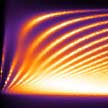 Optics and mesoscopic physics teams have discovered a new cooling mechanism concerning electronic components made of graphene deposited on boron nitride. The efficiency of this mechanism allowed them to reach electric intensities at the intrinsic limit of the laws of conduction. This new mechanism, which exploits the two-dimensional nature of the materials opens a 'thermal bridge' between the graphene sheet and the substrate. Researchers have demonstrated the effectiveness of this mechanism by imposing in graphene levels of electrical current still unexplored, up to the intrinsic limit of the material and without any degradation of the device.
Optics and mesoscopic physics teams have discovered a new cooling mechanism concerning electronic components made of graphene deposited on boron nitride. The efficiency of this mechanism allowed them to reach electric intensities at the intrinsic limit of the laws of conduction. This new mechanism, which exploits the two-dimensional nature of the materials opens a 'thermal bridge' between the graphene sheet and the substrate. Researchers have demonstrated the effectiveness of this mechanism by imposing in graphene levels of electrical current still unexplored, up to the intrinsic limit of the material and without any degradation of the device.
Jan 9th, 2018
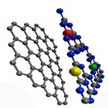 Efficient electrocatalysts lie at the heart of a series of significant energy conversion and storage technologies, and atomically precise understanding of the influences of component dopants is crucial for looking into the reaction mechanism and controlled synthesis of the desired electrocatalysts. Graphitic carbon nitride is a promising electrocatalytic material owing to its intrinsically high N content and abundant edge sites. This material has been researched towards some of the most significant electrocatalytic reactions including oxygen reduction/evolution reaction and hydro evolution reaction. New work has comprehensively explored the influences of component elements within graphitic carbon nitride motiety for electrocatalytic reactions.
Efficient electrocatalysts lie at the heart of a series of significant energy conversion and storage technologies, and atomically precise understanding of the influences of component dopants is crucial for looking into the reaction mechanism and controlled synthesis of the desired electrocatalysts. Graphitic carbon nitride is a promising electrocatalytic material owing to its intrinsically high N content and abundant edge sites. This material has been researched towards some of the most significant electrocatalytic reactions including oxygen reduction/evolution reaction and hydro evolution reaction. New work has comprehensively explored the influences of component elements within graphitic carbon nitride motiety for electrocatalytic reactions.
Nov 13th, 2017
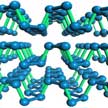 Since the ground-breaking discovery of two-dimensional (2D) black phosphorus (phosphorene), it has created global research interest and triggered ripples of excitement in the scientific community due to its intriguing optical, mechanical and electronic properties. Researchers have looked into the state-of-the-art development of phosphorene, including its structure, preparation routes, anisotropic properties, device applications as well as the bottlenecks encountered by the research community. However, there still are quite a few obstacles and opportunities for scientists to tackle.
Since the ground-breaking discovery of two-dimensional (2D) black phosphorus (phosphorene), it has created global research interest and triggered ripples of excitement in the scientific community due to its intriguing optical, mechanical and electronic properties. Researchers have looked into the state-of-the-art development of phosphorene, including its structure, preparation routes, anisotropic properties, device applications as well as the bottlenecks encountered by the research community. However, there still are quite a few obstacles and opportunities for scientists to tackle.
Oct 31st, 2017
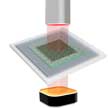 Researchers have reported on improved performance of graphene-based moisture barrier layers. By combining catalytic CVD and ALD they created in scalable fashion nanolaminates of few-layer graphene and aluminium oxid. Unlike previous reports, this new approach exploits the synergy between different materials and growth techniques. These nanolaminates also are a potential material to be included in standard multi-stacked barrier layers to enhance the performance of existing ALD aluminium oxide and produce next generation moisture barriers.
Researchers have reported on improved performance of graphene-based moisture barrier layers. By combining catalytic CVD and ALD they created in scalable fashion nanolaminates of few-layer graphene and aluminium oxid. Unlike previous reports, this new approach exploits the synergy between different materials and growth techniques. These nanolaminates also are a potential material to be included in standard multi-stacked barrier layers to enhance the performance of existing ALD aluminium oxide and produce next generation moisture barriers.
Oct 26th, 2017
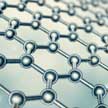 Currently, most graphene-based innovations are not yet at the level of large-scale commercial production. But public and private investments into graphene and its applications in products are large and whichever production methods eventually turn out to be successful, exposure to humans or the environment somewhere along the value chain or life-cycle of the material or product should be anticipated timely. A new review paper offers suggestions on how potential nanospecific safety issues can be addressed, by who and at what stage of the innovation process.
Currently, most graphene-based innovations are not yet at the level of large-scale commercial production. But public and private investments into graphene and its applications in products are large and whichever production methods eventually turn out to be successful, exposure to humans or the environment somewhere along the value chain or life-cycle of the material or product should be anticipated timely. A new review paper offers suggestions on how potential nanospecific safety issues can be addressed, by who and at what stage of the innovation process.
Oct 16th, 2017
 Just like traditional paper origami that results in complicated 3D structures from 2D paper, graphene origami allows the design and fabrication of carbon nanostructures that are not naturally existing but of desirable properties. In a new report, researchers describe how p-type and n-type doping of 2D sheets like graphene in selected areas could be exploited as two 'colors' to guide the sheets into preferred folded shapes where complementarily doped areas maximize their mutual overlap.
Just like traditional paper origami that results in complicated 3D structures from 2D paper, graphene origami allows the design and fabrication of carbon nanostructures that are not naturally existing but of desirable properties. In a new report, researchers describe how p-type and n-type doping of 2D sheets like graphene in selected areas could be exploited as two 'colors' to guide the sheets into preferred folded shapes where complementarily doped areas maximize their mutual overlap.
Oct 6th, 2017
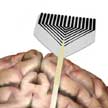 In order to fully exploit the potential of neural interfaces, the forthcoming generation of devices is expected to simultaneously offer multiple functionalities, including recording and stimulation of electrical activity, recognition of neurotransmitters, neuromodulators and other neurologically relevant biomolecules, as well as the capability for controlled drug delivery. Graphene and other 2D materials possess an array of properties (flexibility, electrical mobility, large surface area available for interaction with the neuronal components and amenable to surface modifications) that can enable enhanced functional capabilities for neural interfaces.
In order to fully exploit the potential of neural interfaces, the forthcoming generation of devices is expected to simultaneously offer multiple functionalities, including recording and stimulation of electrical activity, recognition of neurotransmitters, neuromodulators and other neurologically relevant biomolecules, as well as the capability for controlled drug delivery. Graphene and other 2D materials possess an array of properties (flexibility, electrical mobility, large surface area available for interaction with the neuronal components and amenable to surface modifications) that can enable enhanced functional capabilities for neural interfaces.
Sep 22nd, 2017
 Two-dimensional (2D) energy materials have outstanding physical and chemical properties in contrast to their bulk counterparts. This is particularly true for charge storage devices such as lithium-ion batteries and supercapacitors. Unfortunately, when directly applying these 2D nanostructured materials for energy storage, there is still a significant challenge as they may have serious self-restacking leading to decreased active surface areas and sluggish ion transport kinetics. Researchers have now developed an effective interlayer engineering strategy to improve sodium ion transport in 2D nanosheets via controlled organic intercalation.
Two-dimensional (2D) energy materials have outstanding physical and chemical properties in contrast to their bulk counterparts. This is particularly true for charge storage devices such as lithium-ion batteries and supercapacitors. Unfortunately, when directly applying these 2D nanostructured materials for energy storage, there is still a significant challenge as they may have serious self-restacking leading to decreased active surface areas and sluggish ion transport kinetics. Researchers have now developed an effective interlayer engineering strategy to improve sodium ion transport in 2D nanosheets via controlled organic intercalation.
Sep 13th, 2017
 Optics and mesoscopic physics teams have discovered a new cooling mechanism concerning electronic components made of graphene deposited on boron nitride. The efficiency of this mechanism allowed them to reach electric intensities at the intrinsic limit of the laws of conduction. This new mechanism, which exploits the two-dimensional nature of the materials opens a 'thermal bridge' between the graphene sheet and the substrate. Researchers have demonstrated the effectiveness of this mechanism by imposing in graphene levels of electrical current still unexplored, up to the intrinsic limit of the material and without any degradation of the device.
Optics and mesoscopic physics teams have discovered a new cooling mechanism concerning electronic components made of graphene deposited on boron nitride. The efficiency of this mechanism allowed them to reach electric intensities at the intrinsic limit of the laws of conduction. This new mechanism, which exploits the two-dimensional nature of the materials opens a 'thermal bridge' between the graphene sheet and the substrate. Researchers have demonstrated the effectiveness of this mechanism by imposing in graphene levels of electrical current still unexplored, up to the intrinsic limit of the material and without any degradation of the device.
 Subscribe to our Nanotechnology Spotlight feed
Subscribe to our Nanotechnology Spotlight feed





